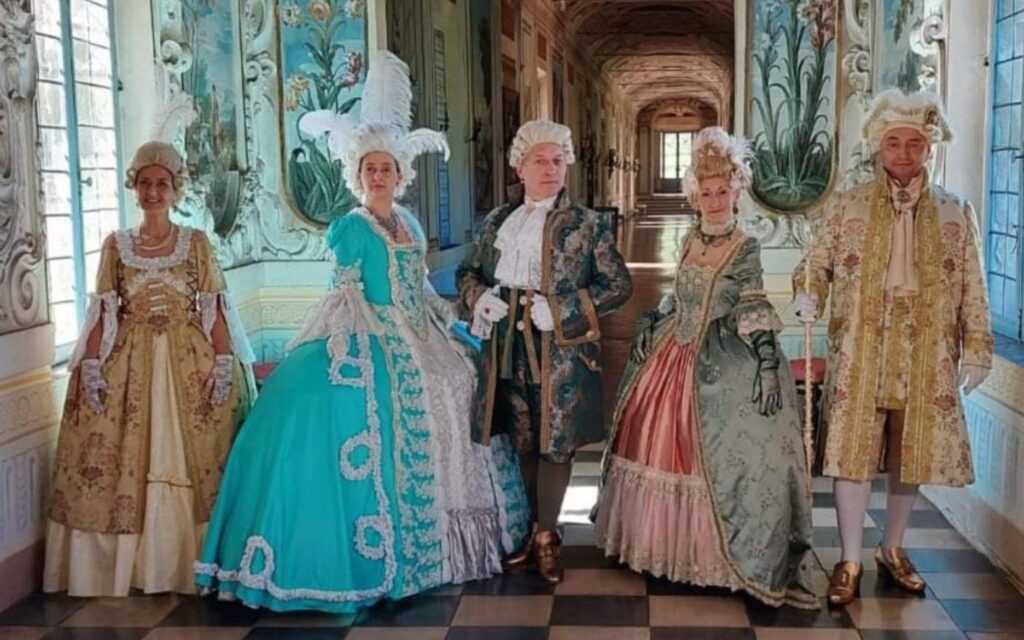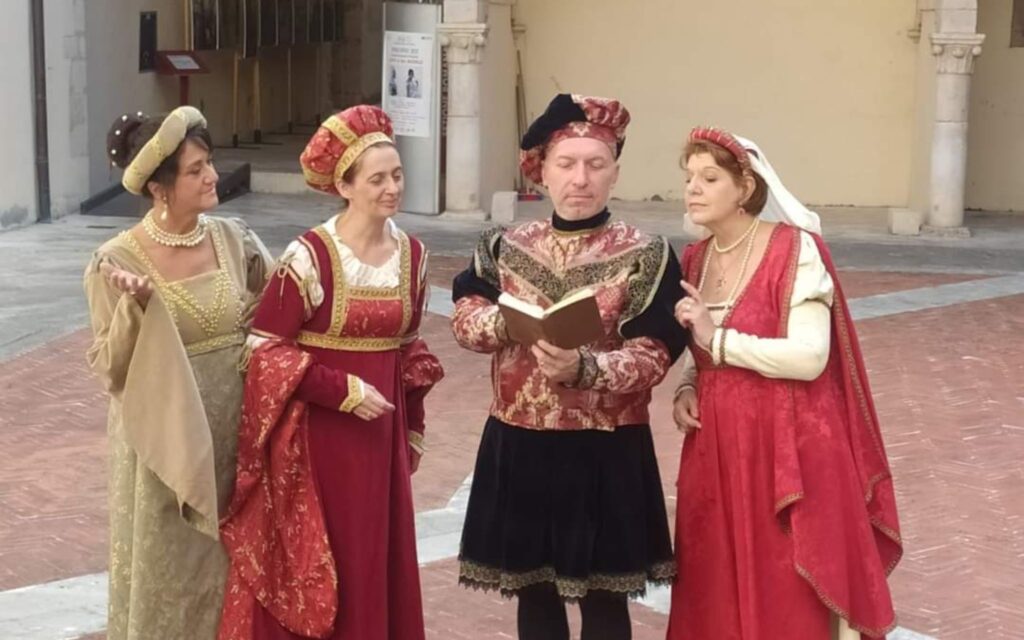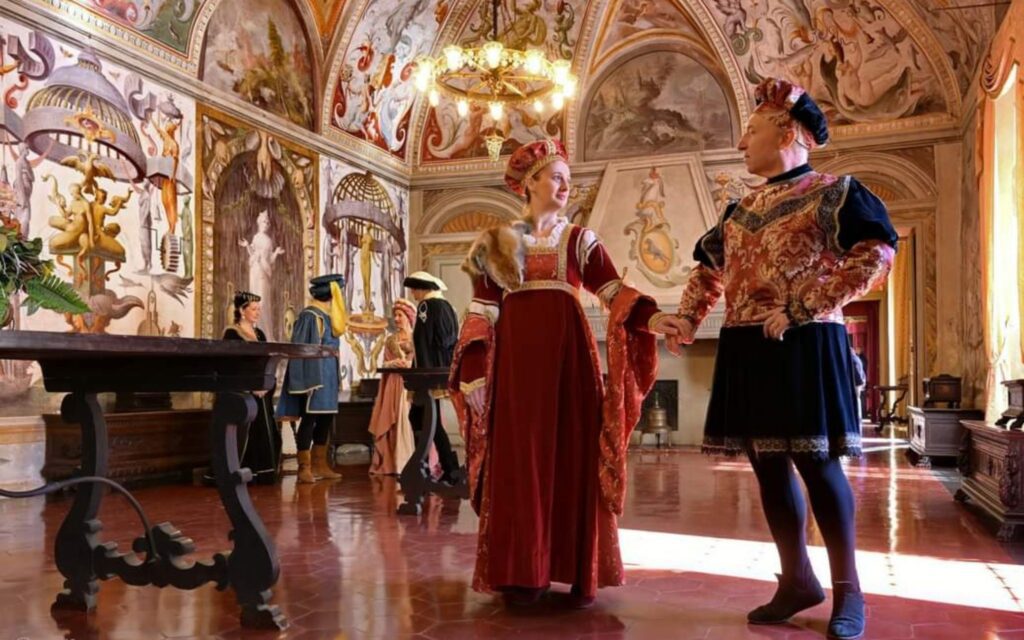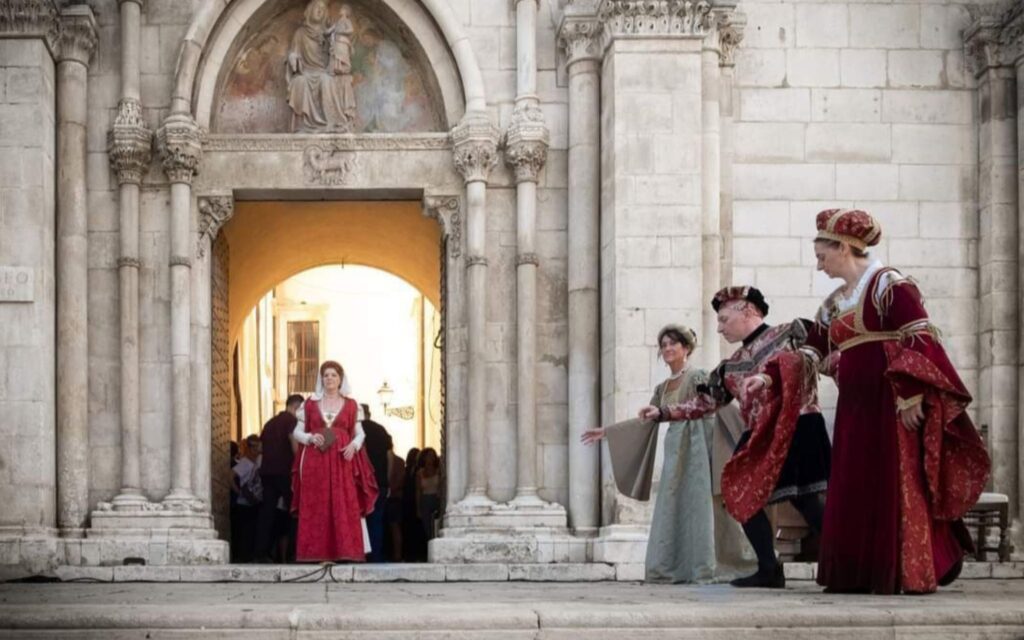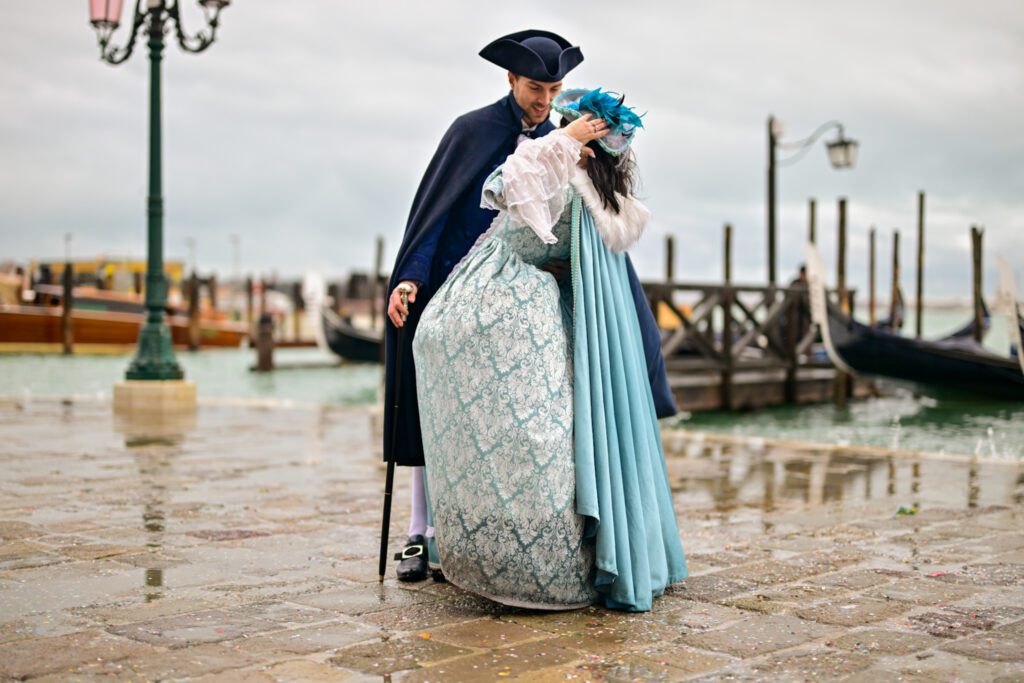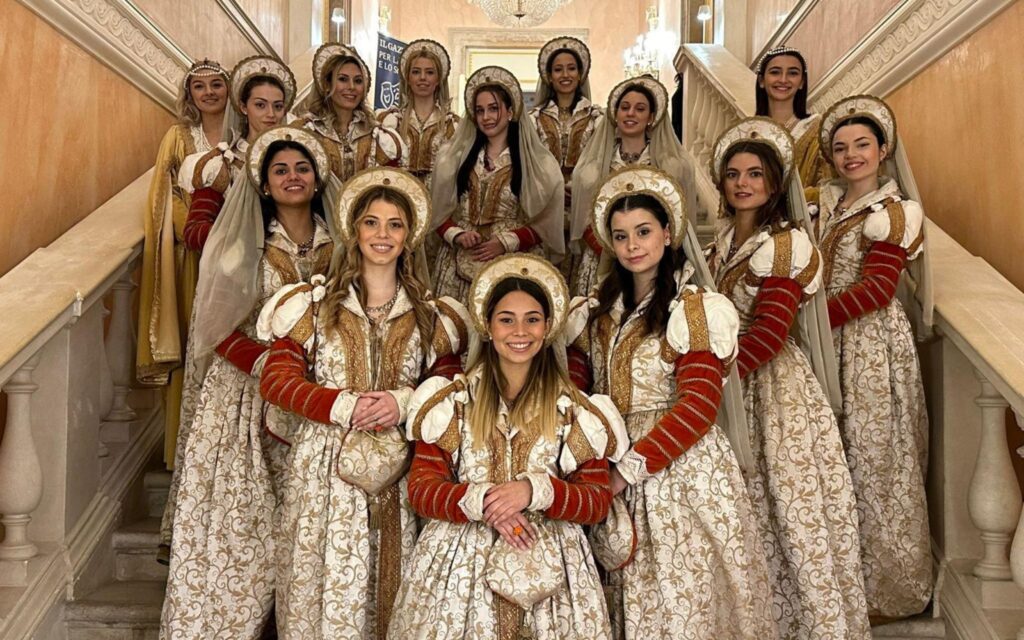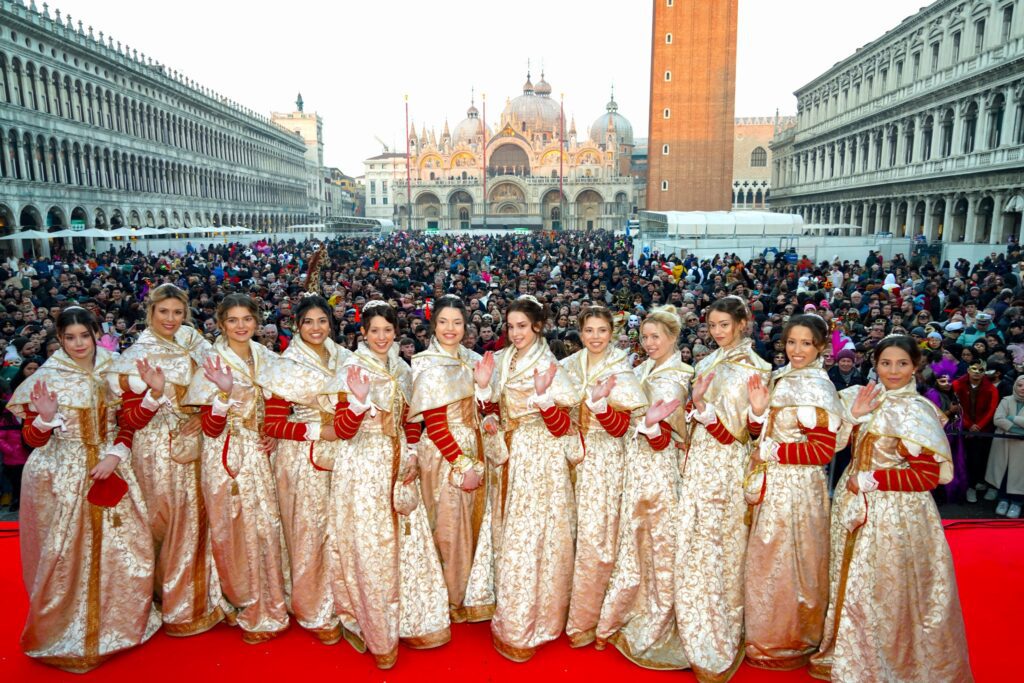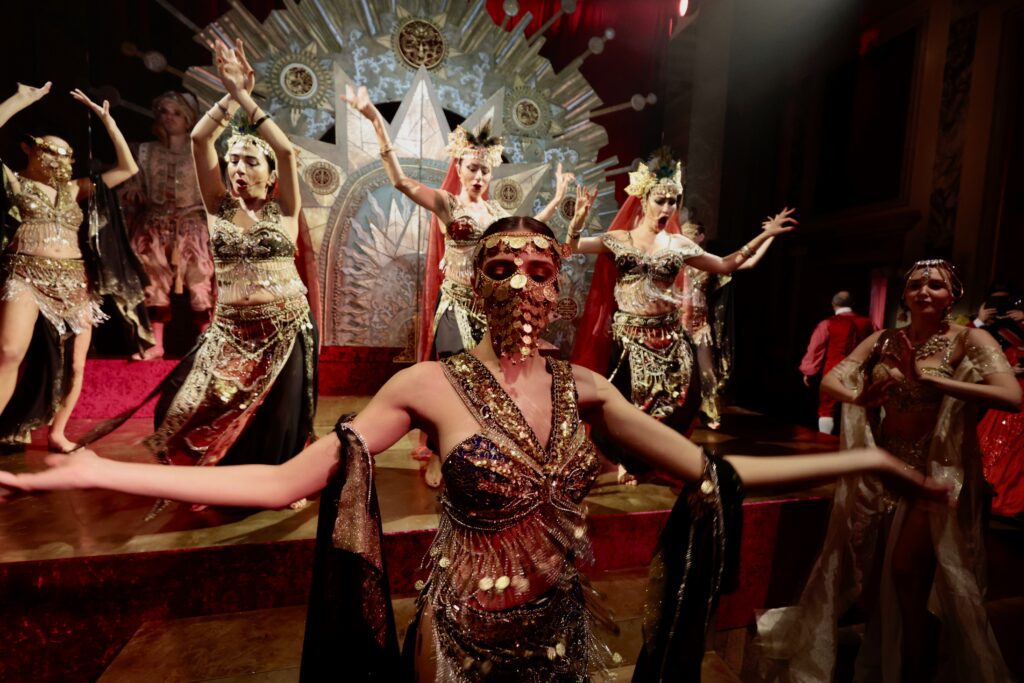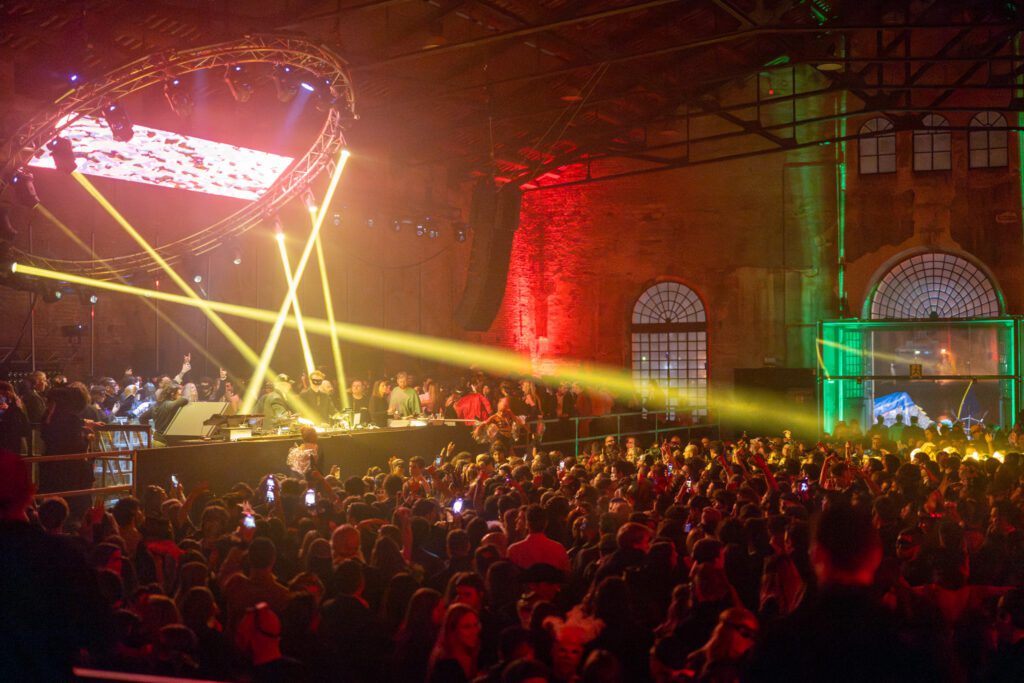Danzare la Storia: balli di corte da Marco Polo al Re Sole a cura della Compagnia del Saltarello
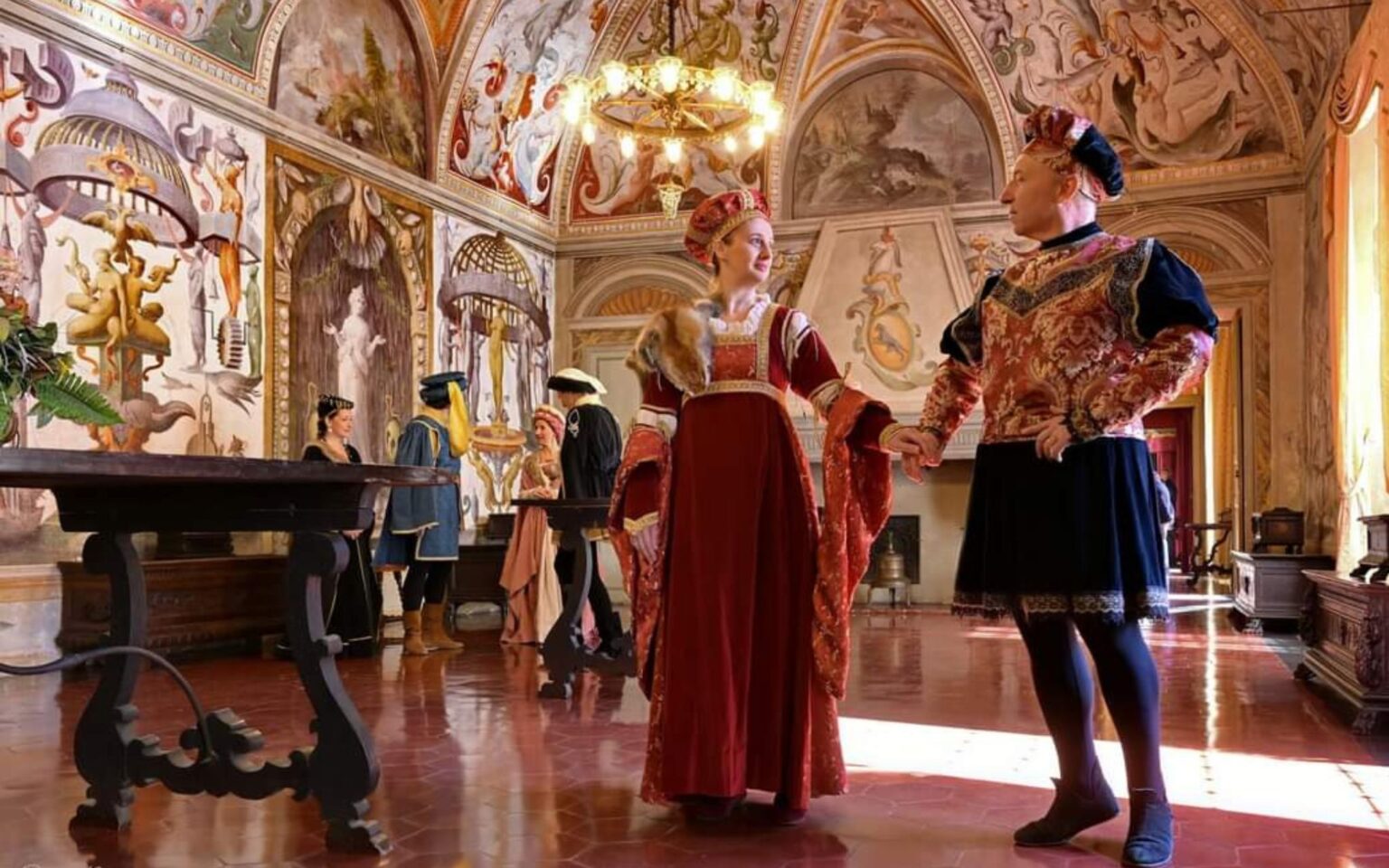
Court dances from Marco Polo to the Sun King by the Compagnia del Saltarello, which will perform dances with original choreography from the 1300s and 1400s (Petit riens, Anello and Amoroso), all the way to the Baroque era with Minuetto, gavotte and contraddanza!
Appointment on Saturday 10th February at 1 p.m., in St. Mark’s Square.
Dancing has always been a part of every individual’s life since the Middle Ages. It was danced on the most diverse occasions and wherever there was an important event to be celebrated: in churches and palaces, in gardens and on the street, in courtyards, castles and taverns.
Well documented in iconographic images are the collective dances where dancers arrange themselves in long rows or in circles, but couple dances are also encountered. We can imagine the festive character of these dances thanks to the names of some of the musical pieces that recall, for example, the term “saltare” as in the case of the saltarello, the name also chosen by the historical group performing in this program precisely to emphasize the social and joyful character of the ancient dance. It is only from the 15th century, however, that we can reconstruct dances described in the manuscripts of the first dance masters, such as Domenico da Piacenza and Guglielmo ebreo da Pesaro Of these great masters we offer some choreographies such as Petit rien ,Anello and Amoroso.
An extraordinary turning point in the history of dance and theatrical and cultural life in the European courts was that imprinted by the Sun King. The dancer-king, who after debuting in Jean Baptiste Lully’s Ballet de la nuit, the ballet of the night, precisely by playing the role of the sun, made dance an instrument of government. All nobles and courtiers if they wanted to get a prominent role and be accepted by the king had to learn to dance. In order to do so, they had to hire dance masters who, under the king’s urging, invented the first script to mark fashionable steps and choreography. Thanks to this writing called Beauchamp -Feuillet and to those like Letizia Dradi, a dance historian and choreographer, who manage to decipher its intricate symbols, today, it is still possible to dance “à la mode de France” and feel like perfect courtiers.
From a famous work by J.B. Lully, Le Borgeois gentilhomme, an exotic march of Turks and a brilliant gavotte, to music instead by Marin Marais a brilliant contradance and the most characteristic dance of the period, the Minuet , to music by J. Blow.
On stage elements of the group the Saltarello of San Possidonio with splendid costumes by Mita Meschiari.

